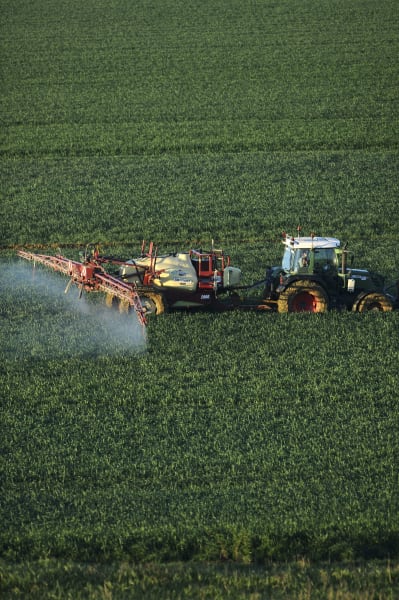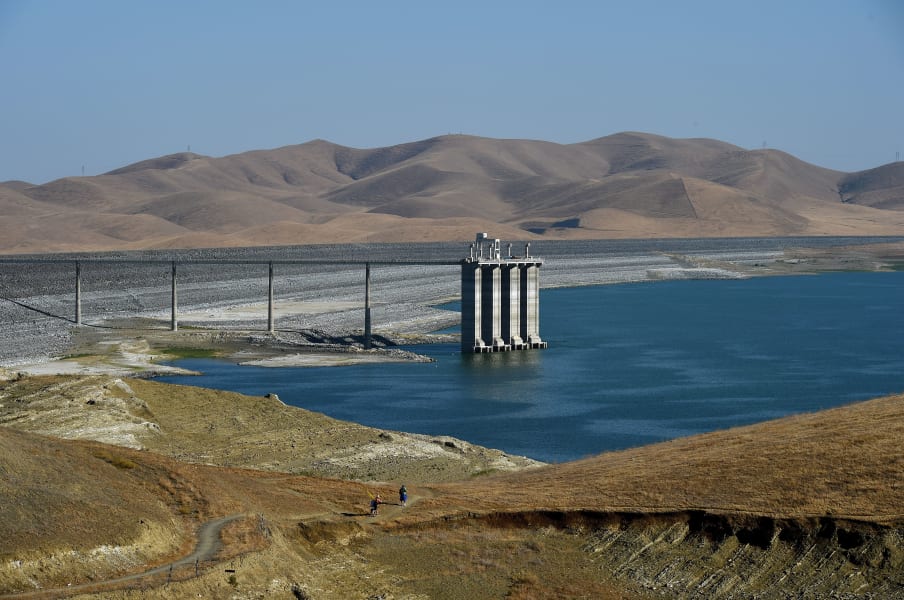World
10 surprising sources of greenhouse gases
By Anna Fletcher, CNN
Updated 0906 GMT (1706 HKT) December 9, 2020
Share


1 of 10
Greenhouse gas emissions don't just come from airplanes, factories and coal power stations. Our environmental footprint is spread across a huge range of everyday goods, from the videos we watch online to the water we drink.
The fashion industry is responsible for about 10% of global greenhouse emissions, according to the United Nations Framework Convention on Climate Change.
It consumes more energy than aviation and shipping industries combined. Most of those emissions come from its long supply chains and energy-intensive production -- especially the dyeing and finishing process. Ryan McVay / Getty Images
The fashion industry is responsible for about 10% of global greenhouse emissions, according to the United Nations Framework Convention on Climate Change.
It consumes more energy than aviation and shipping industries combined. Most of those emissions come from its long supply chains and energy-intensive production -- especially the dyeing and finishing process. Ryan McVay / Getty Images
Some glass furnaces are never turned off, operating at temperatures of up to 2,800 degrees Fahrenheit and emitting greenhouse gases including carbon dioxide, carbon monoxide, nitrogen oxides and sulfur oxides. Because a glass bottle weighs more than aluminum or plastic alternatives, it can produce greater transport emissions.
One study by researchers at the University of Manchester, UK, concluded that glass containers have a bigger carbon footprint than plastic or aluminum. But if a glass bottle is recycled enough times, it can have a smaller footprint than a plastic bottle. PATRICK HERTZOG/AFP/AFP/Getty Images
One study by researchers at the University of Manchester, UK, concluded that glass containers have a bigger carbon footprint than plastic or aluminum. But if a glass bottle is recycled enough times, it can have a smaller footprint than a plastic bottle. PATRICK HERTZOG/AFP/AFP/Getty Images
Humans consume more calories from rice than any other food. But rice is grown by keeping paddy fields immersed in water, and microorganisms in the wet soil produce greenhouse gases.
Rice farming accounts for 1-2% of manmade greenhouse gas emissions. Slash-and-burn deforestation to clear land for rice farming also releases CO2. Justin Sullivan/Getty Images North America/Getty Images
Rice farming accounts for 1-2% of manmade greenhouse gas emissions. Slash-and-burn deforestation to clear land for rice farming also releases CO2. Justin Sullivan/Getty Images North America/Getty Images
Concrete is excellent for construction. That's why we make over 4 billion tons of it every year -- more than any other material. But producing its main ingredient, cement, could generate up to 8% of global CO2 emissions, according to experts at the CICERO Center for International Climate Research. PRAKASH SINGH/AFP/AFP/Getty Images
The world streams one billion hours of YouTube videos every day. Although Google (which owns YouTube) is powered entirely by renewable energy, watching videos still creates emissions at the viewers' end -- from "the energy used by network equipment, caches, and end user devices," according to a study conducted by Bristol University in the UK.
They estimate that electricity associated with YouTube produced 10 million metric tons of CO2-equivalent gases globally in 2016 -- the same as a year's worth of emissions from two million passenger cars. Chris McGrath/Getty Images Europe/Getty Images
They estimate that electricity associated with YouTube produced 10 million metric tons of CO2-equivalent gases globally in 2016 -- the same as a year's worth of emissions from two million passenger cars. Chris McGrath/Getty Images Europe/Getty Images
Crustaceans like shrimp and lobster make up only 6% of the world's fishing catch, but they account for 22% of fisheries emissions, according to a 2018 study.
Crustacean fishing tends to use much more fuel compared to other seafood, according to the study. As a result, crustacean seafood produces more greenhouse gas emissions than meats like chicken and pork. Astrid Stawiarz/Getty Images North America
Crustacean fishing tends to use much more fuel compared to other seafood, according to the study. As a result, crustacean seafood produces more greenhouse gas emissions than meats like chicken and pork. Astrid Stawiarz/Getty Images North America
Crustacean fishing may be bad for our climate, but cheese isn't far behind. A recent study by researchers at Oxford University and Swiss agricultural research center Agroscope showed that cheese was the fourth-worst offender for carbon emissions out of protein-rich foods, behind beef, lamb and crustaceans.
The global dairy sector produces around 4% of manmade greenhouse gas emissions. Softer cheeses tend to contain less milk, so they have a lesser impact on the environment. Aaron Davidson/Getty Images North America
The global dairy sector produces around 4% of manmade greenhouse gas emissions. Softer cheeses tend to contain less milk, so they have a lesser impact on the environment. Aaron Davidson/Getty Images North America
Fridges and air conditioning units use chemicals that absorb and release heat, to reduce air temperature. Many use HFC chemicals, which warm the atmosphere between 1,000 and 9,000 times more than CO2.
When fridges and air conditioning units are thrown away, they release HFCs into the atmosphere, which can take hundreds of years to break down. Chris McGrath/Getty Images Europe/Getty Images
When fridges and air conditioning units are thrown away, they release HFCs into the atmosphere, which can take hundreds of years to break down. Chris McGrath/Getty Images Europe/Getty Images
Most fertilizers -- including manure -- release nitrous oxide. Better known as "laughing gas," nitrous oxide is no joke when it comes to climate change. It's a greenhouse gas that can stay in the atmosphere for more than 100 years, and is up to 300 times more powerful than carbon dioxide. It accounts for around 6% of our total greenhouse gas emissions.
However, without nitrogen fertilizers, crops like wheat would need more land to grow on, and that would produce even greater emissions, according to one study published by the University of California. REMY GABALDA/AFP/AFP/Getty Images
However, without nitrogen fertilizers, crops like wheat would need more land to grow on, and that would produce even greater emissions, according to one study published by the University of California. REMY GABALDA/AFP/AFP/Getty Images
Reservoirs produce 800 million metric tons of CO2-equivalent emissions each year, according to a study led by researchers at Washington State University. Reservoir gases make up about 1.3% of our total greenhouse gas emissions.
When land is flooded to make a reservoir, and plants and soil collect in the reservoir waters and downstream, this organic matter begins to rot. This process generates methane.
Reservoirs in tropical regions produce more emissions, due to higher temperatures as well as their different biological and chemical make-up. MARK RALSTON/AFP/AFP/Getty Images
When land is flooded to make a reservoir, and plants and soil collect in the reservoir waters and downstream, this organic matter begins to rot. This process generates methane.
Reservoirs in tropical regions produce more emissions, due to higher temperatures as well as their different biological and chemical make-up. MARK RALSTON/AFP/AFP/Getty Images

















